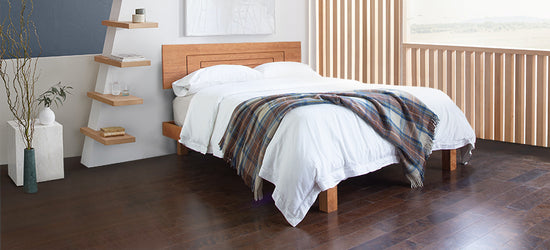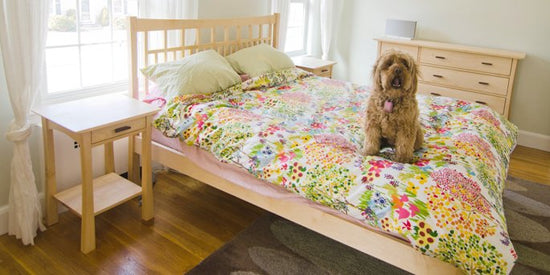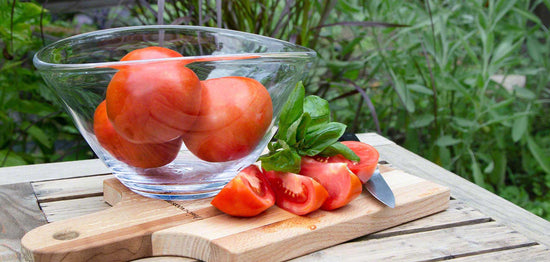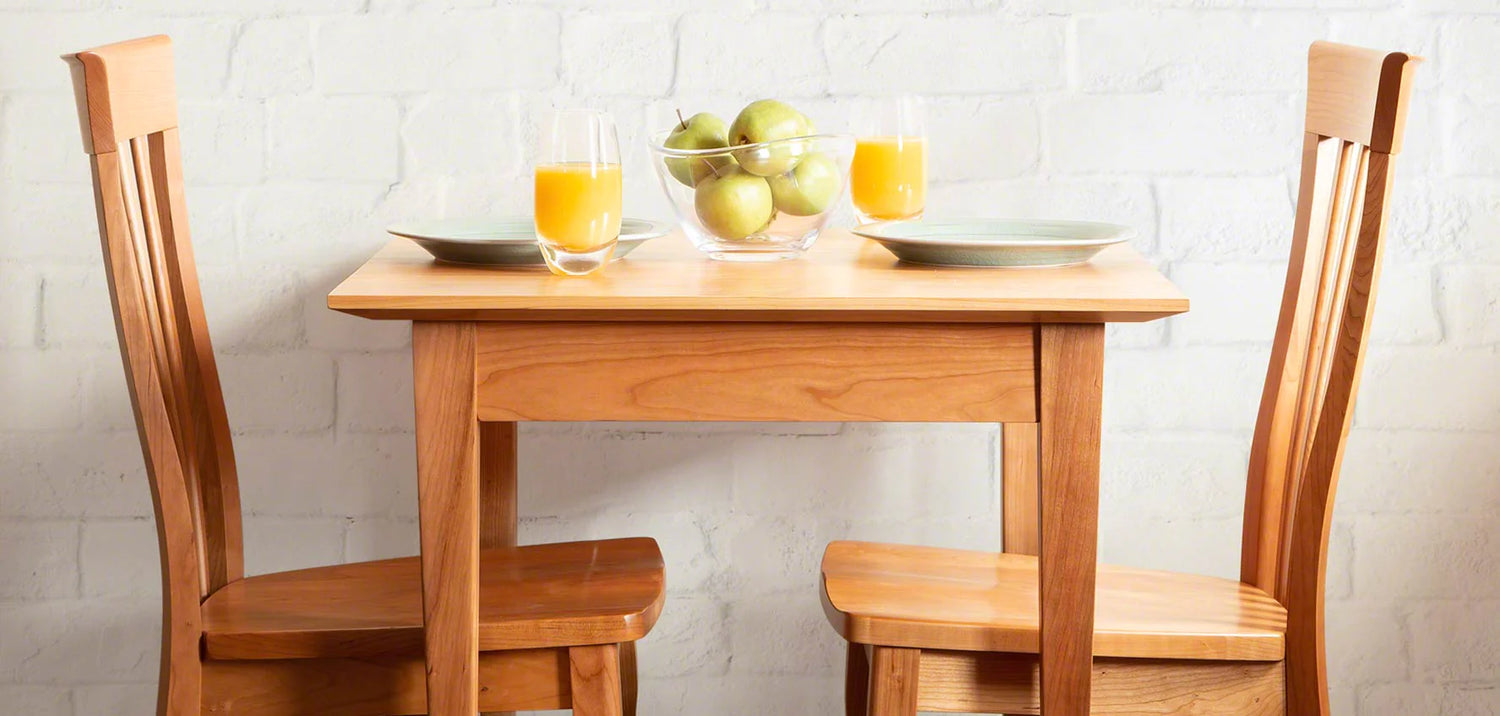Lacquer
Lacquer is a modern wood finish that is commonly used on high end furniture. It is fast drying, impervious to water, and maintains its transparency as it ages. Lacquer finishes are popular because they don’t yellow with age, protect well against liquids, and require very little maintenance.
Lacquers are comparable to a varnish or urethane, but are usually sprayed on rather than applied with a brush or hand-rubbed cloth. Like varnish and urethanes, and in contrast to oil finishes, lacquer forms a film on top of the wood grain rather than saturating it. The use and advancement of lacquer finishes has made shellac largely irrelevant since the mid 1900’s.
The lacquers used by our craftsmen at Lyndon and Copeland is GreenGuard Certified, meaning it adheres to high standards for eco-friendliness and non-toxicity.
Pros & Cons of Lacquer as a Wood Finish
Although lacquer is one of the most common furniture finishes used among high end manufacturers, it does come with some drawbacks.
-
Pros
- Cures to a very hard and durable finish
- Impervious to water and other liquids
- Doesn’t get cloudy or yellow as it ages (certain types)
- Super low maintenance, requires no additional care
-
Cons
- Difficult to apply (need the right equipment and a dedicated spaying area)
- Difficult to remove scratches or dents
- Toxic off-gassing when first applied (safe when dry)
5 Types of Lacquer
There are several different types of lacquer wood finishes. Although all lacquer finishes share some of the key characteristics mentioned above, there are some key differences between them as well.
1. Nitrocellulose Lacquer
Since its inception in the 1920’s, nitrocellulose lacquer has been the dominant finish for musical instruments like guitars, violins, and pianos. It is also popular as a coating on metal and was used heavily in the automotive industry through the mid-1900’s. It dries to a smooth, high-gloss finish and is more malleable after curing than a traditional lacquer.
Nitrocellulose lacquers tend to carry a reddish-amber tint as they age, which gives a beautiful lust and patina to some woods, but can be unattractive on others. You won’t find nitrocellulose lacquer on lighter woods like maple or ash because of the yellowing that occurs as the finish ages. It’s also prone to cracking or “crazing” as it ages and doesn’t protect very well against liquids, chemicals, and abrasions.
2. Acrylic Lacquer
Acrylic lacquers were developed in the 1950s for use on lighter woods like maple, birch, and ash. These products contain synthetic acrylic polymers and dry to a “water-white,” which meant craftsmen could avoid the yellowing problems associated nitrocellulose lacquers. Acrylic lacquers are also more durable and scratch-resistant than nitrocellulose lacquers. The most popular of these finishes are called CAB-Acrylic Lacquers.
CAB-acrylic lacquers contain cellulose acetate butyrate (CAB) as well as acrylic resins and are a bit more flexible than traditional acrylic lacquers. What this means is that CAB acrylic lacquers are a bit less prone to cracking “crazing” than a traditional acrylic lacquer.
3. Catalyzed Lacquer
Traditionally, lacquer finishes contain solvents (see below for common solvents) that prevent the compounds from curing. As the solvent evaporates, the lacquer dries. Catalyzed lacquers contain chemicals (usually some kind of acid) that cause the lacquer to dry to a harder and more durable finish than by just evaporation alone.
These drying chemicals are are either added by the manufacturer or at the time of purchase (pre-catalyzed) or by the craftsmen in their shop (post-catalyzed). You may also hear post-catalyzed lacquers referred to as a conversion varnish. These terms are synonymous.
Catalyzed lacquers are a fairly new phenomenon, having only gained mainstream popularity in the late 1900’s and around the turn of the century. Prior to that, uncatalyzed nitrocellulose and acrylic lacquers were the standard in the world of professional woodworking. However, catalyzed lacquers offer increased durability and fewer finishing issues at a similar price-point, so they’ve gained popularity quickly.
4. Waterborne Lacquer
Waterborne lacquers behave very differently than other lacquer finishes, as they are very different in composition. They contain fewer hazardous chemicals than other lacquers and are more environmentally friendly and less toxic to your health during the application process. That said, these waterborne lacquers are more prone to wear-and-tear than a catalyzed or acrylic lacquer.
5. Urushiol Based Lacquer
Urushiol is a chemical found naturally in the resin of the wax tree and the lacquer tree in Eastern Asia. It is the active chemical in poison oak and poison ivy that causes skin rashes. The resin from the trees, though, was used as a wood finish for thousands of years. Urushiol-based lacquers originated in China ~4,000 years ago as a plant-based wood finish.
Urushiol-based lacquers cure through the processes of oxidation and polymerization, rather than the evaporation of chemical solvents like most other lacquers. Urushiol lacquers are the basis of Eastern lacquerware, which was and is traded popularly around the world. It was also used as a wood finish on coffins, instruments, furniture, and more.
It is not commonly used in American made furniture.
Common Uses of Lacquer
The most common uses of lacquer are
- As a wood finish
- As a nail polish
- As a sealant on metal
- As a protectant and colorant in the automotive industry
- In Eastern lacquerware
Common Lacquer Solvents & Additives
According to OSHA, some of the most common solvents found in lacquers are toluene, xylenes, methyl ethyl ketone (MEK), methyl isobutyl ketone (MIBK), formaldehyde, and methanol.
If you’re concerned about the use of these chemicals on your furniture, consider a water-based lacquer or an oil-based finish (linseed oil or tung oil).
What kind of Lacquer Does Lyndon Furniture Use?
Lyndon Furniture uses a high-solids, pre-catalyzed lacquer. It polishes to a low-sheen, matte finish and contains little to no VOCs upon delivery. It is GreenGuard Certified and adheres to a high level of environmental and health standards.
Upon request, a water-based urethane or hand-rubbed danish oil is also available.
Read more about Lyndon construction details.
What Kind of Lacquer Does Copeland Furniture Use?
Copeland Furniture uses a catalyzed lacquer. It is low-sheen and GreenGuard Certified.
Learn more about Copeland construction details.
Read More on the Blog
-
Common Wood Finishes for Furniture & Flooring
Read MoreThere are lots of options for finishing wood, but when it comes to furniture and flooring, most products fall into one of these five categories.
-
GreenGuard Certification: Everything You Need to Know
Read MoreOne of the most common standards for verifying the safety of wood finishes is GreenGuard Certification.
-
How to Care for a Lacquer Finish
Read MoreLacquer is very durable and easily maintained. It is proven to resist damage from common household liquids and moisture.
-
5 of the Best Oil Finishes for Wood Furniture
Read MoreOil finishes are eco-friendly, food-safe, and non-toxic. They're also easy to repair and produce a more textured grain pattern than many alternatives.
Other Types of Wood Finishes
-

Linseed Oil
More About Linseed Oil -

Tung Oil
More About Tung Oil -

Mineral Oil
More About Mineral Oil




